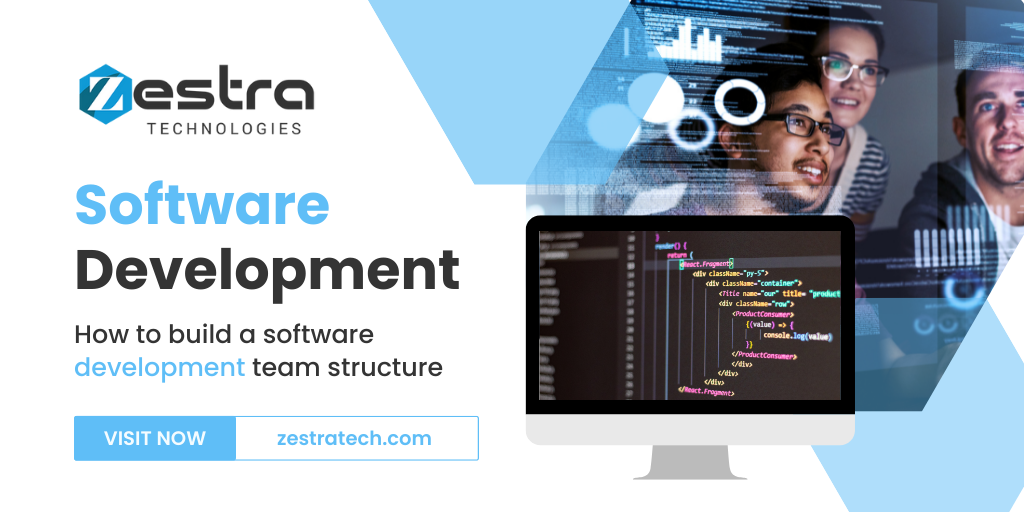How to build a software development team structure
You have an amazing idea for a product and you are eager to revive it. You might have a vision of a product arrangement that could take your venture cycles to the next level. You might be planning to give your company a major upgrade. If you are new to programming improvement, it may be difficult to understand the plans and still feel motivated. Let's say you decide to hire a dedicated improvement group to revitalize your thoughts. How do you find the right group? How do you create the best programming advancement group structure? Learn how to build a Software Development Team structure.
We understand your confusion and will give you a hand. We answer all your fundamental questions about setting up an item advancement team that will make your venture a success.
The key elements of a group structure for software product development
Every item begins with people. Your project's success will depend on how you link your business goals to the product development group jobs. Or, you could be disappointed. When planning for a product advancement group structure ensure that it includes these factors:
- How complex and specific your venture is:
- How long it takes to complete the venture:
- The financial plan that was distributed to the advancement:
Before you jump into the enrollment madness, it is important to determine the scope of your task. If you are going to make an item model, four people might be sufficient to complete the task. If you are planning to send off a new application with additional highlights and other combinations, however, your colleagues will increase.
The group size and design will also be affected by how fast you can turn around your item. It is likely that a smaller group of colleagues will take longer to complete the task. If you are thinking of a new item that will be a game-changer and need to create it quickly and efficiently, then you might need to gather a large group of senior experts or full-stack engineers.
Because the available spending plan is inextricably linked to the above, it will influence every decision you make. This includes the number of people you can recruit and the position of experts that you can get. It also determines how rich you can be when your item gets complicated. You can reduce project costs while maintaining quality at the underlying phases. Increases could be made, with high-need inclusions being the first to receive them. This will allow for more cost flexibility.
How to handle programming advancement and their implications for Product Development group structure
Your work processes and product development group structure will be affected by whether you choose Agile or Waterfall. The size of the venture board you choose will depend on the needs of the group, their obligations, and how the members interact with each other. You can build your product with a solid software development team structure.
In order to ensure that colleagues have good working relationships, a Waterfall project group is established. There are chiefs and subordinates who each have their own obligations. This group structure gives the undertaking administrator greater control over the task work processes. They can also make basic decisions.
Coordinated groups are, again, self-coordinated but independent. There are hierarchical leaders in every case, such as a Scrum Master or Kanban Service Delivery Manager. They have different obligations than a Waterfall project director, but they are more focused on encouraging collaboration within the group and creating a work environment where everyone can succeed. Agile groups allow for a limited number of people to work together, so that each member can focus on their job and create the work process they want. A well-organized software development team structure is a good idea for product development.
Who will be who among the individuals from a product development/improvement group?
Business Analyst:
- Comprehends client's business processes
- Interprets client business requirements into necessities
Business experts dive deep into the client's business processes and analyze partner criticism to help them figure out their needs and adapt their vision to the advancement group's. They can translate a theoretical idea into a set of significant necessities.
A Business Analyst is responsible for advancing an item improvement group by having a solid understanding of business processes from different perspectives and the ability to manage business to ensure that the product item has the highest business esteem. The business examiner may step in before the product improvement group structure has been characterized. They will continue to overcome any barriers between the client, the group and themselves during the later stages. A Business Analyst is part of the software development team structure.
Product Owner:
- Holds liability for item vision and development
- Meets client requirements
A chief is an item proprietor, who has greater responsibility for an item's success than any other improvement colleague. They adjust both market needs and business patterns. They define a business system and shape the item vision. A key aspect of adaptable Agile conditions is that an item owner should be able to work in situations when requirements and work processes change frequently.
It is very easy to see the similarities between the obligations of a Product Owner and a Business Analyst. Is there a difference between them? Are they required to work together in one project?
A business examiner is able to overcome any barriers between a client or a group and can give a vision of the item, but not jump into how it actually works. A Product Owner is more focused on the client, while a Business analyst is much more focused on the venture. A majority of the tasks that an item owner must perform are handled by business professionals. These include handling excess inventory, showing work processes, and so on.
Administrator of the project:
- Assures that an item or part of it is completed on time and within the spending plan
- Supervises and stimulates product development group
In each model, the undertaking administrator is responsible for dispersing work assignments among colleagues, organizing work exercises, as well as refreshing venture status.
Agile tasks place emphasis on self-administration and simplicity. A Project administrator creates the vision for an item, maintains straightforwardness and cultivates correspondence. They also look for advancements and make sure that the group delivers more value with each cycle.
While some people accept the fact that there is no need for a Project manager in an Agile environment with similar jobs such as a Service Delivery Manager, Scrum Master or Scrum Master, it is not obvious. It is essential to have a dedicated Project administrator, even if your organization runs different Agile activities. They could draw a clear conclusion about significant partner prerequisites and daily assignment execution at group level while a Scrum Master would oversee the group.
UX/UI Designer:
- Transforms item vision into easily understood plans
- Client ventures are the best for the client experience and highest change rates
- The item configuration process has two sides: client experience (UX) and UI (UI).
UX is the part that considers all aspects of a client's interaction with an item. UX fashioners are involved in many activities such as client research, persona development, data engineering plan and wireframing. Prototyping is just one example. A UI fashioner creates easy-to-use, eye-pleasing, and natural connections for an item.
An UI/UX designer would be there to assist you throughout the advancement process. They will help you achieve business objectives through utilitarian and drawing-in client encounters as well as investigating, assessing and improving those encounters over time.
Software architect:
- Plans offer a high level of programming design
- Selects the appropriate devices and stages to complete the item vision
- Performs code surveys and sets up code quality standards
A designer is a specialist-level computer programmer. They make decisions about the leader programming plans for an application advancement group. If you are responsible for a product with complicated prerequisites, you will need one. Or heritage programming that requires significant changes. Product planners determine which data and administrations should be combined, how they should work together, and how to ensure that the item is stable and secure.
Software Developer
- Design and settles the item
- Assists with any special issues that may arise during the improvement process
An application is coded by a product engineer. A product engineer codes an application in a similar way as a front-end developer. There is a front-end developer as well as a back-end developer.
Front-end designers are the key to connecting with clients. It is important that all users have a smooth experience with an application, regardless of their gadgets, stage or functional framework.
Back-end engineers are responsible for the core of an application, which is its calculations and business logic. Back-end engineers are skilled in both the creation of code and the tasks of a draftsman. You might, for example, design an application engineering plan or execute the necessary combinations.
Full-stack engineers are also available. They can handle almost everything at once. They can handle everything, from clients to servers to data set management and all the necessary reconciliations.
Software Testing Engineer:
- Ensures that the application meets all requirements
- Spots of functional and non-functional defect
Software testers are responsible for ensuring that an application meets all requirements. Non-functional requirements are specific requirements that describe what the application should do. Functional requirements, on the other hand, define what the application should do. Test engineers perform various checks to verify that both are true. Then, they analyze the test results and report on the application's quality.
They test an application from many angles, including functionality, security, and performance. To track all the tests and make sure that they meet all requirements. Different types of testing documentation may be created by QA specialists. Test scenarios, test protocols, and test results reports are all possible options for QA specialists. Experienced QA engineers also design and implement quality control processes and procedures. These procedures help to prevent defects in later stages of development.
Test automation engineer:
- Design a test automation ecosystem
- Create and maintain automated testing scripts
Test automation engineers are there to help you test faster, better, and more efficiently. They create test automation scripts to enable this. These programs provide continuous, reliable feedback without the need for human intervention on application quality.
An experienced test automation engineer can help you decide which parts of your application are suitable candidates. These are intended for automation. They will also create an easy-to-maintenance and update test automation ecosystem. They will ensure that your test automation project generates the most value at a low cost.
Conclusion:
This is the perfect team structure for software development. Many IT companies are more or less following the same model. For assistance regarding your software development needs, Contact our team at info@zestratech.com. Zestra Technologies is a leading web and mobile application development and outsourcing company that assists businesses develop and implementing their software development needs. We also hire react native, hire ReactJs developers. Join and collaborate with us on your journey to build the most efficient software you can for yourself.

